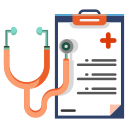Birth Defects: Causes and Care

- Birth Defects
- 14 Aug 2023
Overview
What is birth defect?
Any issue that arises in the baby when it is growing inside its mother’s body is referred to as a birth defect.
Birth defects also known as congenital anomalies; arise during pregnancy and can be detected before or at birth as well as later in life. It could range from moderate to severe. The organ involved and the severity of the defect, both have a major role to play in how it affects a child’s life. Most birth defects appear in the initial three months of pregnancy. The defect could be structural like in cleft lips or functional as in heart problems. Birth defects play an important role in causing newborn deaths and permanent disabilities. 1what is birth defect?| Researched based study from cdc.gov

Causes
Causes
The majority of congenital abnormalities lack a clear cause. While some may result from the following causes:
Gene defects
- Each cell’s nucleus has stick-like structures called chromosomes, which store genes.
- A small percentage of birth defects are brought on by abnormalities in the chromosomes such as Down’s syndrome, or fault in a single gene like in cystic fibrosis.
Consanguinity
- The likelihood of newborn deaths, intellectual disability, and other birth abnormalities is about doubled when parents are blood relatives.
- It also raises the prevalence of rare genetic congenital illnesses.
Inheritance
- A child might inherit the genes responsible for certain diseases from the parents, leading to birth defects.
Socio-economic situation
- It is estimated that low- and middle-income nations account for 94% of cases of severe birth defects. 2Causes of birth defects | Researched based study from who.int
- This higher risk is indirectly related to pregnant women not having access to enough nutrient-dense diets, being exposed to infection more frequently, or having less availability of medical services and screening.
Environmental factors
- Teratogens are substances in the environment that can lead to birth defects when the mother gets exposed to them during pregnancy.
- For example, infections like syphilis, radiation exposure, poor nutrition in mothers causing deficiency of iodine or folate, medical conditions like gestational diabetes, or consumption of alcohol or certain medications like phenytoin.
Multifactorial inheritance
- A birth defect might result from a variety of factors combined like hereditary and environmental factors.
Maternal age
- Mothers older than 35 years could have an increased risk of poor fetal development.
Unknown causes
- The root cause of the majority of congenital illnesses like cleft lip, congenital heart problems, etc. remains a mystery.
Prevalence
How common is it?
- Babies with birth abnormalities can be found in all nations and ethnic origins.
- According to World Health Organization (WHO), it affects 6% of newborns worldwide, excluding the number of stillbirths and aborted pregnancies. 3prevalence | Researched based study from who.int
- Every time a woman gets pregnant, there is a risk that the child may be born with a birth defect.
- One in every 33 newborns in the United States is born with at least one of these birth abnormalities, and it accounts for 20% of all infant deaths. 4prevalence| Researched based study from cdc.gov
- The likelihood of having a birth defect varies depending on its kind, the parents’ ages, the history of their health, and other elements.
Vulnerability
Who is at risk?
Birth malformations can happen at any time during pregnancy, but certain factors—such as those listed below—increase the chance of birth defects.
- Deficiency of folic acid– may result in neural tube defects. (NTDs) 5who is at risk | Researched based study from cdc.gov
- Smoking cigarettes – may result in problems with the heart, intestine, or lungs such as asthma.
- Drug use – increases the chance of some birth disorders, such as intellectual and developmental delays (IDDs), behavioral issues, miscarriages, and stillbirth.
- Drinking alcohol – It may result in fetal alcohol syndrome, marked by intellectual or developmental disability (IDD) or behavioral issues. 6who is at risk? | Researched based study from nih.gov
- The use of specific medicines – the majority of drugs that pregnant women currently take have not been examined for their safety or effectiveness in this population. 7who is at risk?| Researched based study from cdc.gov
- Infections – cytomegalovirus, toxoplasmosis, and zika virus infections are some of the illnesses that have been connected to birth malformations.
- Obesity – babies born to obese mothers are at risk for defects in the neural tube, heart abnormalities and developmental delays in kids. 8who is at risk? | Researched based study from nih.gov
- Uncontrolled diabetes – Women who have poorly managed blood sugar are more likely to deliver overly big babies, have breathing issues, or experience other negative health effects.
- Exposure to the environment – exposure to large radiation doses, 9Who is at risk?| Researched based study from aafb.org or handling or breathing in specific chemicals during pregnancy 10who is at risk? | Researched based study from nih.gov are more likely to have birth abnormalities in babies.
Symptoms
Symptoms
The symptoms can be of numerous varieties depending on the kind of birth defect. Some examples include:
- An abnormality in the shape of the face
- Disproportionate hands, feet, or limbs
- Tilted eyes, little ears with a top fold
- A small mouth and a protruding tongue
- A little nose with a flattened nasal bridge
- Short neck or big ears
- An extended face
- Tiny hands with short fingers
- Cleft lip or cleft palate
- Feeding difficulties
- Delayed milestones
- Delayed growth
- Sluggish muscular tone
- Hefty testicles
- Cardiovascular issues
- Recurring infections
- Issues with the kidneys
- Joint problems
- Digestive issues
- Breathing issues
- Fast-beating heart
- Other heart problems
- Skin that is blue or grey
- Lack of bladder control
Diagnosis
Diagnosis of Birth defects
Depending on the type of birth defect, it may be possible to detect it in three stages namely, preconception, prenatal, and neonatal screening.
Preconception screening / Screening before pregnancy:
- A tool for identifying people who run the risk of transferring a condition to their offspring.
- This is especially helpful in nations where consanguineous marriage is widespread and includes gathering family histories and carrier screening.
Prenatal screening:
- Screening is conducted while a woman is pregnant.
- Prenatal testing consists of screening in two phases of pregnancy.
- An ultrasound and a mother’s blood test may be part of the first-trimester screening, which is performed from 11 to 13 weeks of pregnancy.
- Fetal echocardiogram, comprehensive ultrasound evaluation or anomaly ultrasound, and a maternal serum screen are all possible components of the second-trimester screening, which is carried out from 15 to 20 weeks of pregnancy.
Diagnostic tests:
- Doctors typically recommend additional diagnostic tests if the screening test findings are abnormal to identify any birth abnormalities or other potential issues with the baby.
- These procedures could involve chorionic villus sampling (CVS), amniocentesis, and high-resolution ultrasonography also referred to as level II ultrasound.
Neonatal testing / newborn screening :
- The early referral and start of medical or surgical therapy are made possible by newborn screening, which is a crucial step in lowering death and disability from congenital diseases.
- In certain cases, the birth deformity is evident from the moment of birth.
- It’s possible that other birth problems, such as some heart anomalies, won’t be discovered until much later in life.
- Certain endocrine, hematologic, and metabolic conditions can be checked for in newborns, though many of these may not manifest symptoms right away.
- When a kid has a health issue, the primary care physician may perform a physical examination, request additional testing, and ask about the child’s medical and family histories to check for birth defects.
- The child may be sent to a genetics and birth defect specialist by the child’s primary care physician if a diagnosis cannot be reached following the examination.
Prevention

Prevention
It is not always possible to stop birth defects. It is crucial to take a few steps as mentioned below to practice good health both before and during pregnancy:
- Eat a nutrient-rich, balanced diet.
- Keep a healthy weight.
- Consume folic acid-rich prenatal vitamins.
- Get a vaccination against diseases like rubella.
- Confirm that taking drugs while pregnant is safe.
- Steer clear of alcohol, tobacco, and recreational drugs.
- Keep away from pesticides and heavy metals.
- Pregnancy is a time to control blood sugar.
- Steer clear of radiation exposure.
- Get routine screenings performed.
- Get immediate medical attention for a fever.
- Make an effort to avoid infections.
Complications
Complications
The complications could range from mild problems that may not need a treatment to severe complications like a miscarriage or an infant death. They could consist of the following:
- Eyesight problem.
- Hearing issues.
- Middle ear infections.
- Learning disability.
- Long-lasting lung disease.
- Increased blood pressure.
- Obsessive-compulsive disorder. (OCD)
- Attention deficit or hyperactivity syndrome. (ADHD)
- Improper digestion.
- Persistent infections.
- Thyroid issues
- Heart disease.
- kidney problem.
- Diabetes.
- Miscarriage.
- Stillbirths.
- Newborn deaths.
Treatment
Treatment and care
Treatment is not necessary for certain mild congenital abnormalities. However, treatment options for moderate to severe defects may include:
- Medicine – The quality of life can be improved with medical therapy for several metabolic, endocrine, and hematological diseases. For example – the management of congenital hypothyroidism.
- Prenatal surgery – aims to prevent long-term effects with early treatment. Surgery is frequently used to fix fetal heart and kidney problems while the kid is still in the womb. This allows for decompression and early treatment for a better developmental prognosis.
- Postnatal surgery – Soon after delivery, surgery is frequently required for serious structural defects like cleft lip, cleft palate, and spina bifida. When surgery is combined with appropriate postoperative care, the risk of death or morbidity associated with structural congenital disorders is frequently reduced.
- Long-term care – Certain congenital abnormalities in children may require long-term care, including physiotherapy, speech and language therapy, occupational therapy, assistance from families, and community involvement.
- Gene therapy – may be a potential treatment for some genetic abnormalities, but it is not yet widely utilized.
Outlook
Outlook
Early detection through screening, referral, and management improves the outcome in some cases. Having their unborn child diagnosed with developmental defects is the very last thing any expectant parent would want to hear. While most birth defects are unavoidable, preparing for and maintaining good health throughout pregnancy is crucial. The prognosis will depend on the type of defect, its severity, and whether or not the baby receives timely care after birth. Some conditions may necessitate continuous care or increased support thus helping them live as fully and independently as possible.
Any feedback on this article?
 This Articles content was accurate
This Articles content was accurate Very Informative Article
Very Informative Article I have a question or a comment
I have a question or a comment
 This article contains inaccurate content
This article contains inaccurate content This article was not helpful
This article was not helpful I have a question or a comment
I have a question or a comment
We appreciate your helpful feedback!
Checkout our social pages
References
-
Centers for Disease Control and Prevention
National Vital Statistics Report/What is Birth defect?
-
World Health Organization
Birth defects/fact-sheets/Socio-economic causes
-
World Health Organization
Congenital anomalies
-
Centers for Disease Control and Prevention
Infant mortality statistics from the 2013 period linked birth/infant death data set
-
Centers for Disease Control and Prevention
Use of Supplements Containing Folic Acid Among Women of Childbearing Age/vulnerability
-
National Institutes of Health
Alcohol use and binge drinking among women of childbearing age /Vulnerability
-
Centers for Disease Control and Prevention
Treating for Two: Medicine and Pregnancy/Vulnerability
-
National Institute of Child Health and Human Development
Risk of Newborn Heart Defects Increases with Maternal Obesity/Vulnerability
-
American Academy of Family Physicians
Health Effects of Prenatal Radiation Exposure/Vulnerability
-
National Institutes of Health
Reducing Prenatal Exposure to Toxic Environmental Agents: ACOG Committee Opinion


































